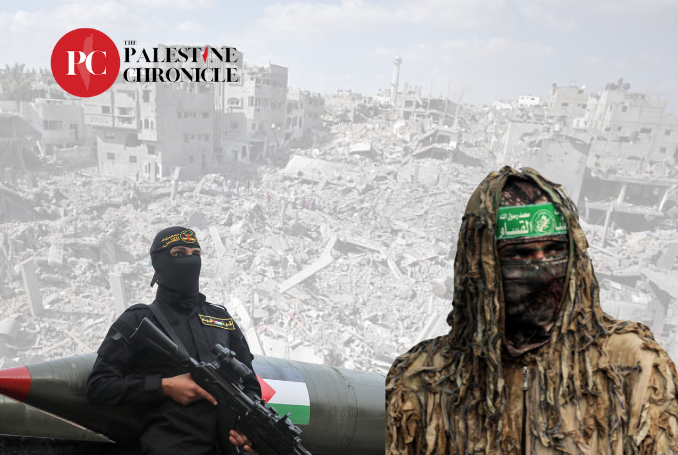
WARNING: If you have not seen the film, the last three paragraphs reveal the fate of the heroine. If you do not wish to know, then stop reading before you reach that point.
Pan’s Labyrinth is an extraordinary film boasting a touching performance from Ivana Baquero, playing Ofelia, an innocent young girl introduced against her will to the evils of the Spanish Civil War. The visuals of this film are literally out of this world. The special effects are breathtaking involving the creation of several memorable evil dream-fantasy creatures. In fact, the dream sequences in the film are so riveting that the “reality” sequences sometimes pale in comparison.
In 1944, a few years after the Spanish royalists lost the Civil War to Franco’s fascists, a widow marries a Spanish army captain (Sergi Lopez). He commands a remote northern Spanish garrison where he’s assigned to root out remnants of royalist resistance. The marriage is clearly one of convenience for her, as the love of her life was her first husband, a tailor, who was killed during the fighting. She brings with her a teenage daughter just beginning to enter the realms of sexual, intellectual and moral discovery that come with adolescence.
For the captain, the marriage has one purpose alone: to provide a male heir. He is a brutal, true-believer fascist who brooks no opposition from royalists, family or his own household staff. In fact, the least sign of resistance brings to bear fearful levels of violence. In this character, the director has created a perfect foil for the tender girl who will be his nemesis.
Rounding out the cast is another sterling performance from Maribel Verdu, who plays Mercedes, the housekeeper (also a royalist sympathizer). The outcome of the plot turns on the bonds of affection that develop between her and the daughter. The housekeeper quickly understands the loneliness and despair of the little girl consigned to a loveless family life (apart from her mother’s affection) in a place next door to Oblivion. For her part, the daughter immediately senses the housekeeper’s Republican sympathies and protects her, thus cementing their bonds.
 The Faun (PictureHouse Films)
The Faun (PictureHouse Films)The mother is pregnant with the captain’s child when she arrives. The pregnancy does not go well. Her daughter is desperate to help and so begins her descent into a rich and frightening dream world in which she seeks help for her earthly problems only to be posed frightening challenges by the hoary creatures she meets. These scenes, as I said, are alternately spectacularly beautiful and bare-knuckle frightening.
Del Toro has created a memorable character in the Faun (Doug Jones), phantasmagorical satyr right out of a Picasso painting or Nijinsky dancing the Rites of Spring. The faun is alternately Ofelia’s guide to the nether world, her protector, her chastiser, and perhaps even her leering enemy. Until the end, even Ofelia doesn’t know which of all these facets is his true character (and perhaps we’re meant to think that all of them are). Young’s deep soothing/threatening/leering vocal delivery is absolutely perfect for the part. The actor also doubles as the other horrific fantasy character, the Pale Man, with empty eye sockets and eyeballs which he inserts into his hands before he makes a mad dash to capture Ofelia. The entire scene will make your hair, if not entire body, stand on end.
A leitmotif of the film which no reviewer I’ve read has remarked upon is the fantasy scenes as allegorical commentary on the Civil War. Captain Vidal seems the embodiment of Franco. Ofelia seems the embodiment of the Spanish nation, and more specifically the martyrs who fought and died for the Republican cause, enduring long suffering at the hands of Franco. And Ofelia’s brother, with whom Carmen is pregnant, is reminiscent of King Juan Carlos, the current Spanish monarch who endured decades as a seeming enabler and supporter of Franco only to emerge after his death as a full-fledged democrat and savior of the nation. In the film, Carmen endures a harrowing pregnancy and eventually dies during childbirth. Her son survives at least partly due to the fairy aid that Ofelia provides from nighttime forays into the Pan’s world.
Just as the Spanish people persevered through the suffocating and stultifying Franco years with their national dignity intact, so too Ofelia never succumbs to the unrelenting pressure of Vidal to conform to his brutal will. At the conclusion of the film, Vidal tries to remove the baby from her arms with an appeal to obey his order. She resists to the end and pays the ultimate price for retaining her humanity and honor.
It is through her sacrifice that her brother is born and later saved from Vidal’s clutches. In the final scene, in which Ofelia dies and enters the world of the Labyrinth as the Princess she had earlier been foretold to be, del Toro tells us that the sacrifice of the martyrs has not been in vain. That it has a reason. And that reason is the explosion of creativity and democracy personified in post-Franco Spain. Ofelia, in this final fantasy sequence joins her dead father and mother sitting on enormous throne-towers in a sort of Holy Trinity of Spanish royalty.
In the penultimate resolve, the director returns us to Ofelia’s dying body as blood drips from it onto the stones of the Labyrinth. The next image we see is of the mythical date tree (pictured in the film poster above), which had been afflicted with disease borne by the noxious Toad. But after Ofelia has slain the Toad and watered the tree with her blood, we see in the final shot the tree in all its towering majesty. This brought to mind for me Thomas Jefferson’s famous quotation:
The tree of liberty must be refreshed from time to time with the blood of patriots and tyrants.
The housekeeper has shed Vidal’s blood, Vidal has shed Ofelia’s blood, Carmen has shed her own blood in conceiving her son. All of which allows the Tree of Liberty to flourish in the form of a gloriously reborn Spain.









hi . i know you want the world be a better place . so when i saw a website of an antiwar organization , i remembered you. i suggest you to gather with us in this community . ( im so sorry and i apologize if what i say in English is funny! im really sorry but i cant speak English better! )
http://www.enoughfear.org/
oh ! please visit my weblog . i changed template ! i really hope for your comment!
thank you my brother! ( notice : muslims call each other my brother ) 😉
I saw the film today and cannot stop thinking about it. I want to think Ophelia became the princess and continued on. How did she get out of the locked room near the end and why did the Captain not see the faun she was speaking too? She then gave her last breath after seeing her kingdom? I want to think the fantasy was real. Otherwise I am left utterly depressed by her sacrifice.
No, the fantasy wasn’t real at least imho. But because it was an allegory it alows you the beauty of reading the film on 2 levels: one the hard, cold, brutal reality that was Franco’s Spanish fascism & the infinite suffering it inflicted on the Spanish nation in the person of Ofelia; the second is the allegorical level in which her suffering transforms her into a princess AND allows the tree return to its glory. The tree is, as I said, the tree of liberty & allegorically Spain herself. Spain could never have returned to its glory w/o the blood & suffering of the Ofelias of the republican resistance.
Yes, it is a terribly sad & depressing film, no doubt. But one cannot forget the glorious thing Spain has turned into in the aftermath of Franco’s death. The film wants you to remember both.
I think that Ofelia’s story was 100% real. If it was completely psychological and meant only to represent the Spanish struggle, then why have the post-death sequence in the kingdom? I think Del Toro realized that not everyone would see it through a historical/metaphorical lens and used Ofelia’s arrival in the kingdom as a way to not only symbolize the struggle of the Spanish loyalists but to also tie up Ofelia’s character and give it some semblance of a happy ending.
I saw it through a different lens completely. I saw it through a religious scope (not sure if Del Toro envisioned it that way or not) but obviously the movie says a lot about sacrifice and losing your life to truly gain it. Every action that Ofelia made in that movie was for the ultimate end of Ofelia losing her physical life.
“I want to think the fantasy was real. Otherwise I am left utterly depressed by her sacrifice.”
I believe the fairy tale was real the way it was presented. There are a few cues that the fairytale was real and not just imagined by Ofelia. There are some objects and creatures that come into the real world. For example the chalk, the book with empty pages which would show the story only if Ofelia was completely alone, the root underneath her mother’s bed. They all came in contact with other people.
For the story to have a completely tragic ending Ofelia should have failed to become the princess. The movie as having both a tragic and a happy ending at the same time.
“why did the Captain not see the faun she was speaking too?”
The fairytale is a very secret realm. Even Ofelia, the princess, has to pass through some tough challenges to have access to it. Why would a brute be able to even see the faun? Besides, the Captain is a grown up and doesn’t believe in that kind of nonsense.
I glanced at your article, and i think you are mistaken to make the Captain and Ophelia allegories of Franco and Spain. They represent something much broader than that. Try looking at it through these glasses: Captain Videl represents that thing in everyone that desires immortality, and Ophelia represents escapism.
try tossing that around a bit.
As a film student, I have studied this film, and have read in depth into Del Toro’s meanings and aims for the film. From this, I have concluded that Vidal represents the brutal and harsh reality that Ofelia has found herself in. He not only commits the most cruel of acts, but also acts as a barrier between Ofelia and her true destiny in the same way that he acts a barrier between Spain and it’s destiny. Both ultimately, are searching for freedom. Ofelia’s trips into the fantasy world, I believe, are real. As mentioned by DanP, items from Ofelia’s fantasy world make their way into the ‘real’ world. Yet, none of these itmes are actually seen in the same way by others as they are by Ofelia. As much as one would like to believe the fantasy is real, it could be Ofelia’s need to escape from the world she is living in. Throughout the film, there are references to Fauns placed strategically around the set – the horn pattern on the mother’s bed, above every door in the mill house there is a simple faun carved, the fig tree is in the shape of Pan’s horns and the blood pattern in Ofelia’s book. With faun’s being placed around Ofelia’s surroundings it could be that her visits with Pan are just dreams, and the reference to a faun comes from the images in her surroundings. Of course, it could all be just as real as you and I.
What about the meaning of the recurring circle (windows in the house, carvings in the underground cave, the lantern)? Is it symbolic, or a nod to Gaudi? Or is it merely stylistically important to the era geographically?
Methinks there might be some symbolism that’s been missed here. An immortal being who leaves her fathers kingdom,
despite warnings not to, becomes mortal, then dies. Her father grieves at the disobedience that leads to his child’s separation from him, but always believes his child will return one day. Finally, after a sacrificial act, the child returns to the father, restored, and to the thunderous applause and joy of all those in the fathers court. What does this remind me of? Hmmm??
“Loyalist” not “royalist”. The royalists aka the Carlist fought for Franco and the fascists. The girls mother and father were loyal to the democratically elected government which were predominantly socialists.
May seem trivial but when you say “royalist” to refer those who fought Franco’s piggies you mean either loyalist or republican.
@ gray: You’re absolutely right. I confused “loyalist” with “royalist.” My error.